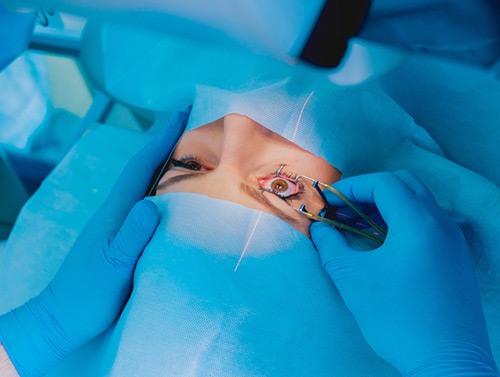Laser in-Situ Keratomileusis

LASIK combines the accuracy of the Excimer laser with the quick-healing characteristics of a procedure first performed in 1949 called Lamellar Keratoplasty. The primary difference between PRK and LASIK is that, with PRK the surface of the cornea is treated, while with LASIK the inner tissue of the cornea is treated. Both have similar success rates, but LASIK usually offers patients less postoperative discomfort and a quicker return to functional vision.
During the procedure, a special device creates a hinged flap of thin corneal tissue, and the flap is gently folded out of the way. The laser reshapes the underlying tissue, and the surgeon replaces the corneal flap over the treated area where it bonds securely, without the need for stitches. With less surface are to heal than PRK, LASIK patients recover very quickly, and most experience little, if any, discomfort. Functional vision returns very rapidly, with the majority of patients seeing well enough to drive in a day or two without glasses or contact lenses.
Most patients elect to have LASIK performed on both eyes at the same time. To be a good candidate for LASIK, the cornea must be of sufficient thickness to allow for the flap to be made and still have enough tissue under the flap to allow for the proper amount of tissue to be removed to achieve the targeted level of correction. Patients with severe dry eye syndrome, very thin corneas, or other conditions, such as the beginning stages of a cataract, may be better candidates for other refractive procedures.



